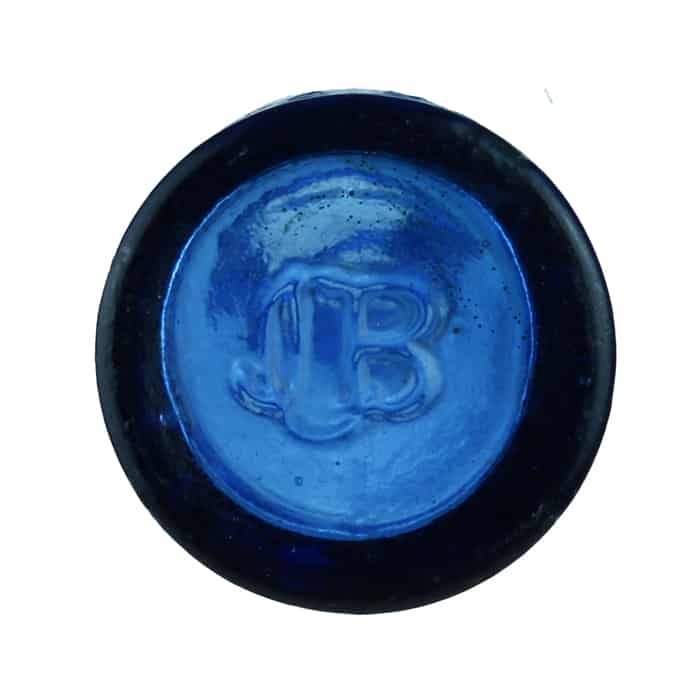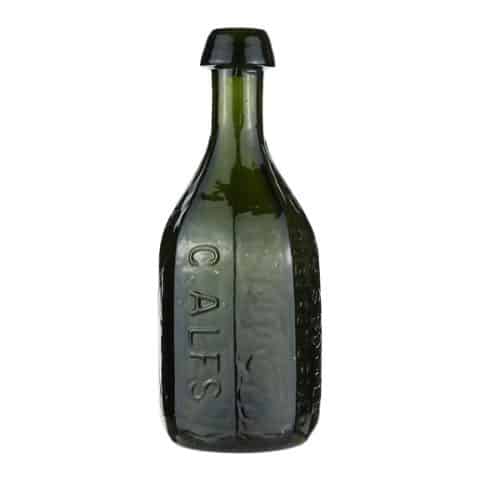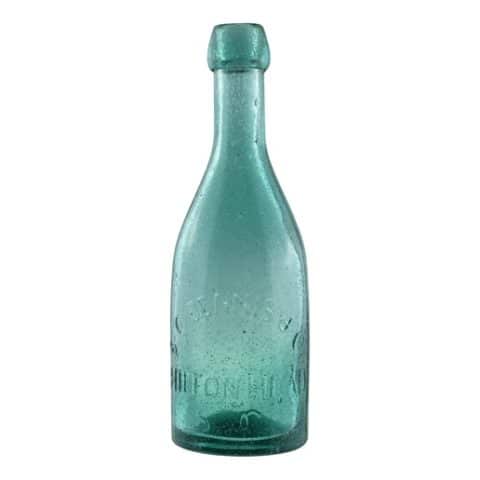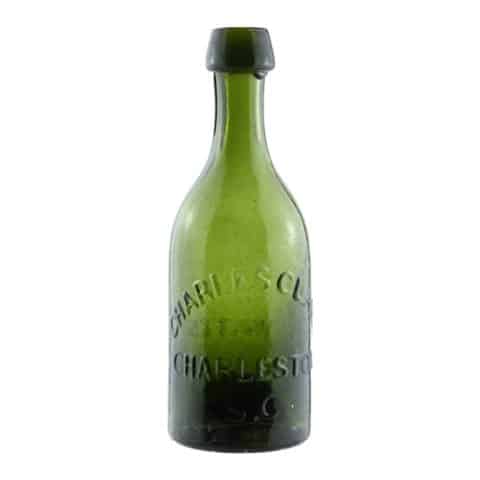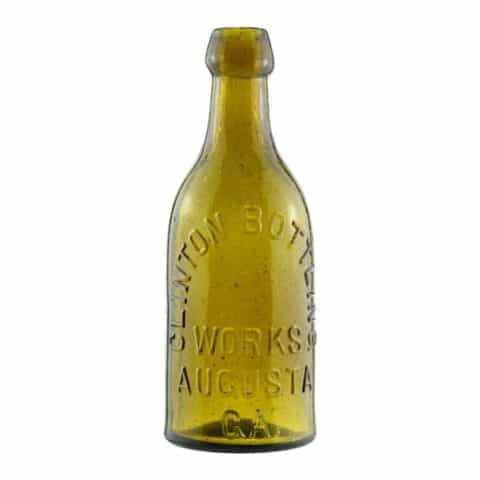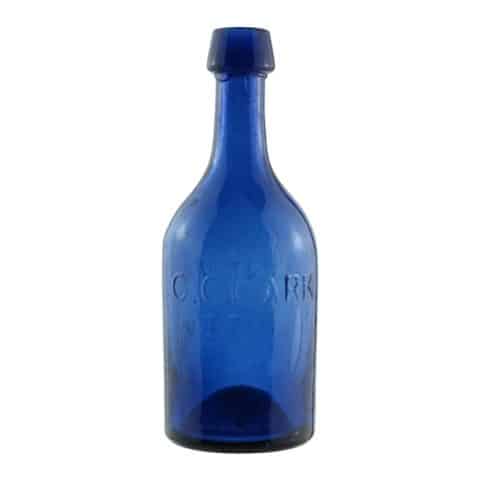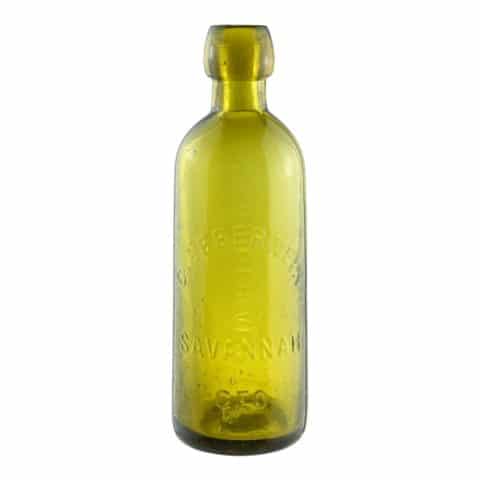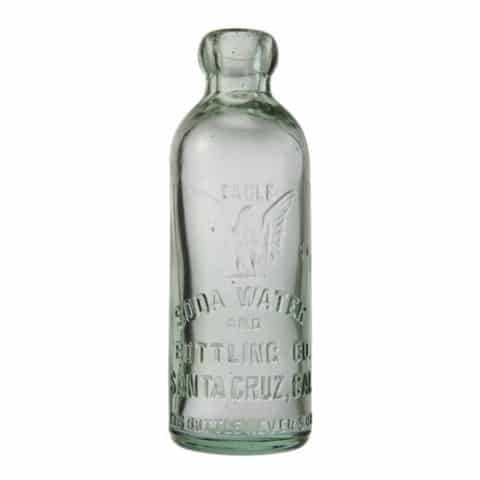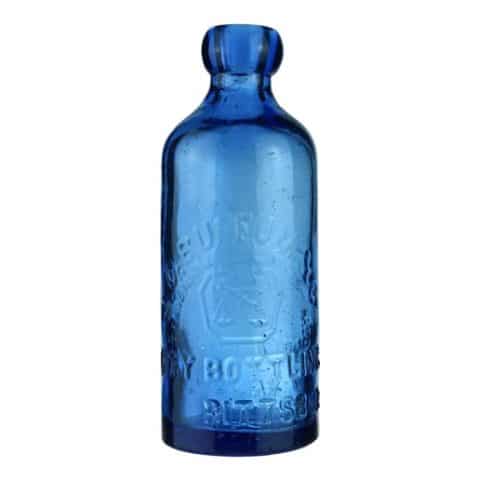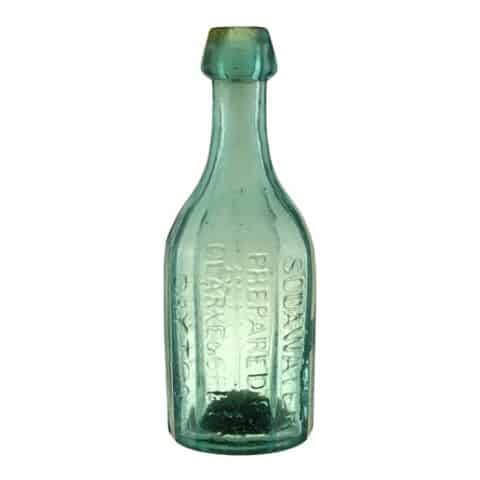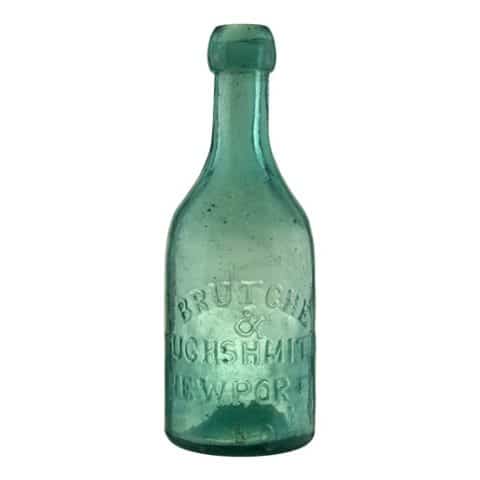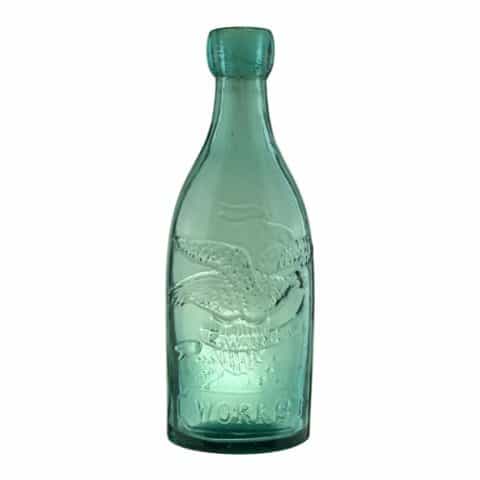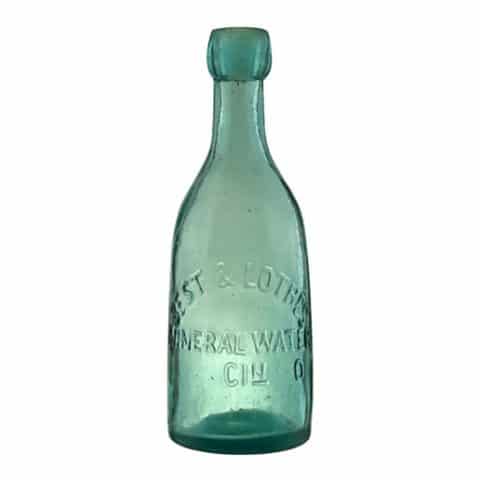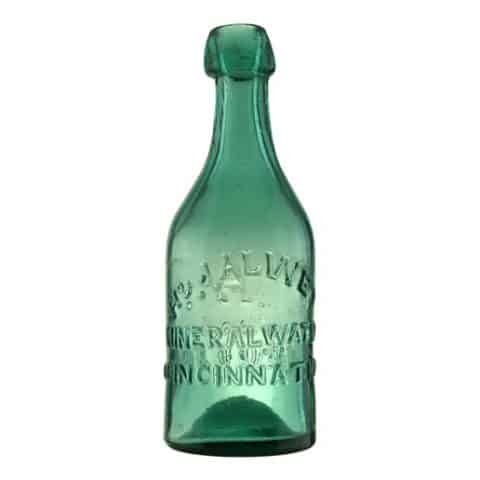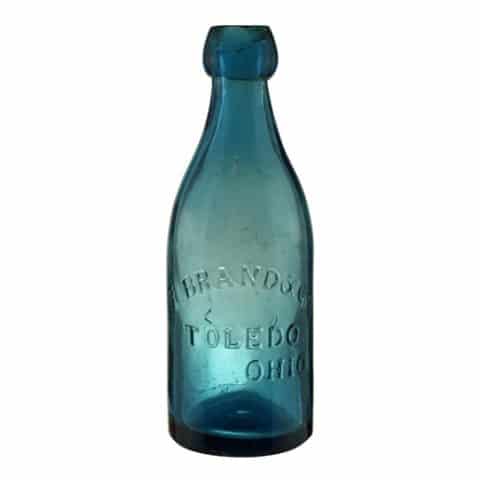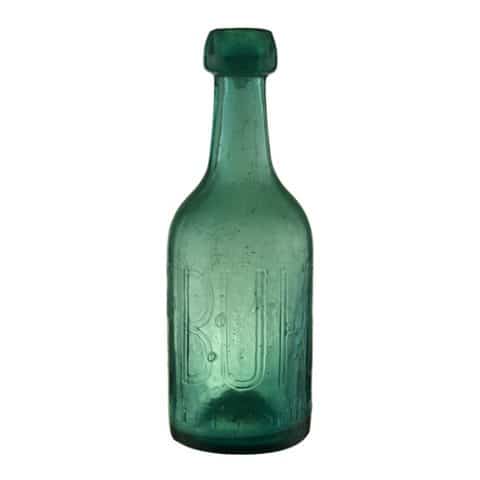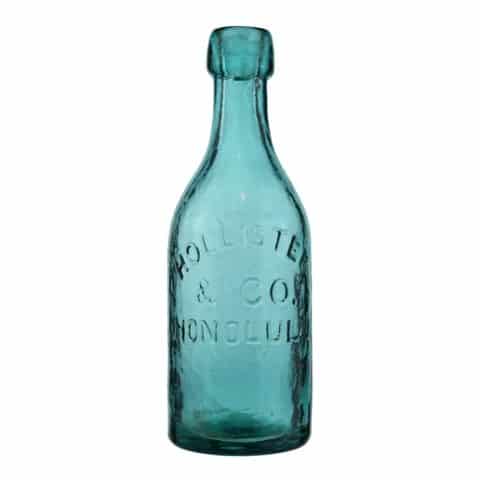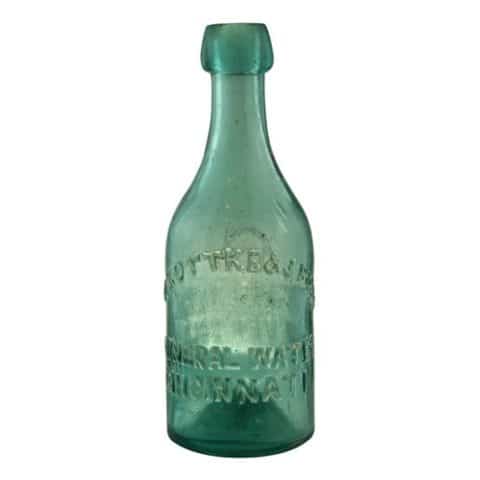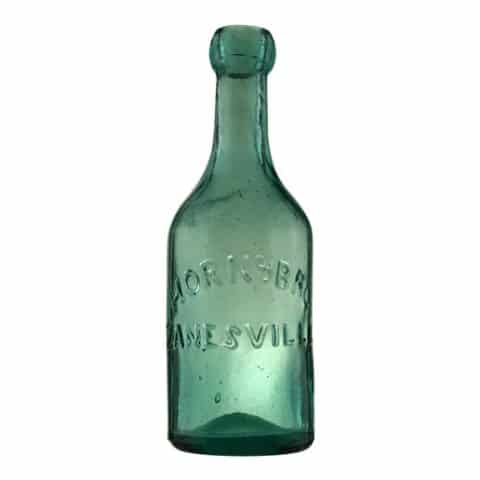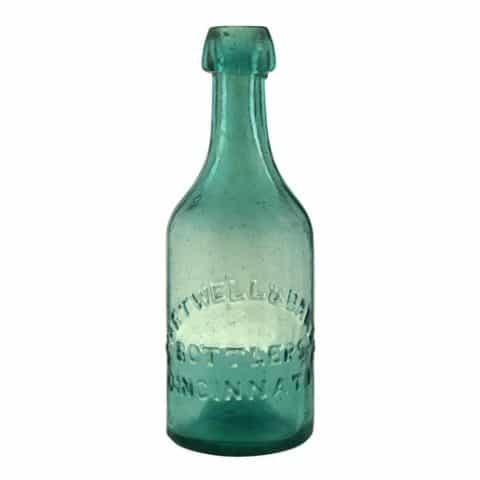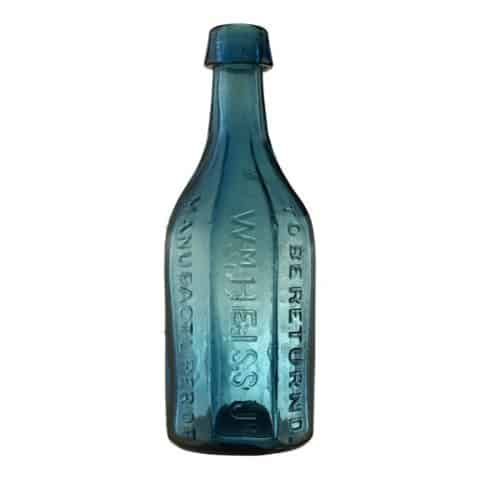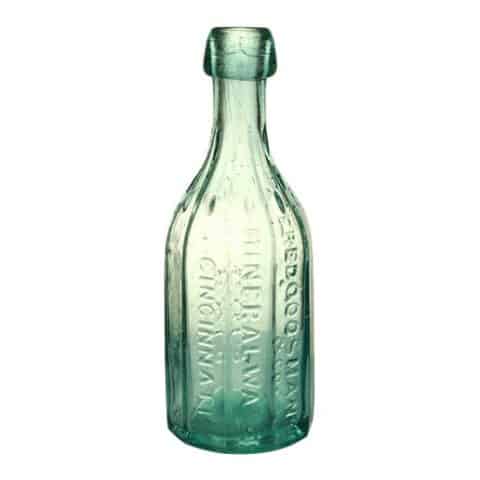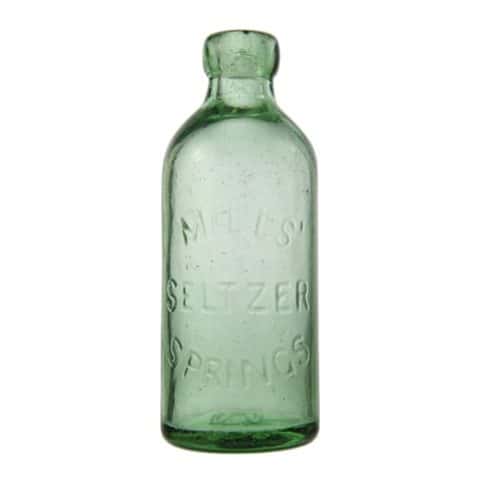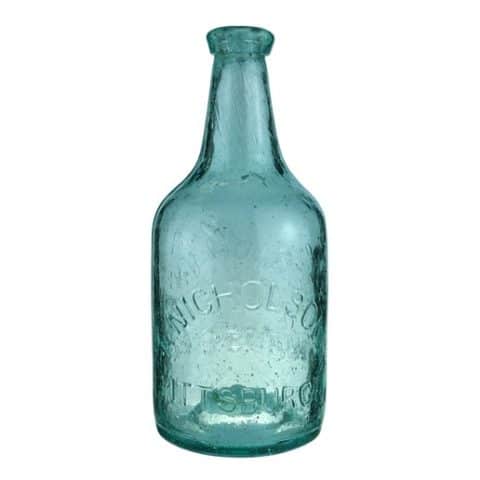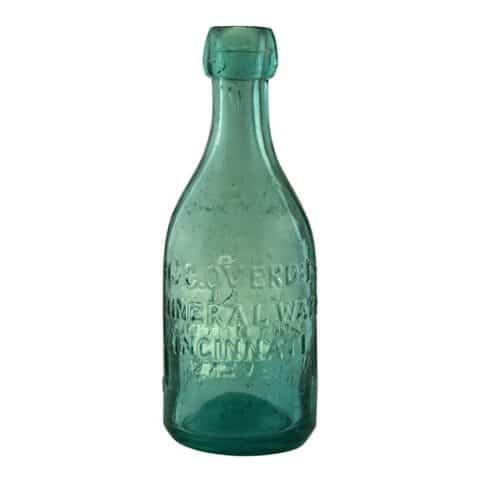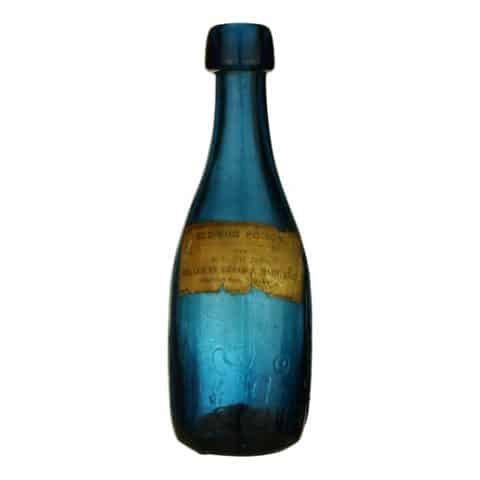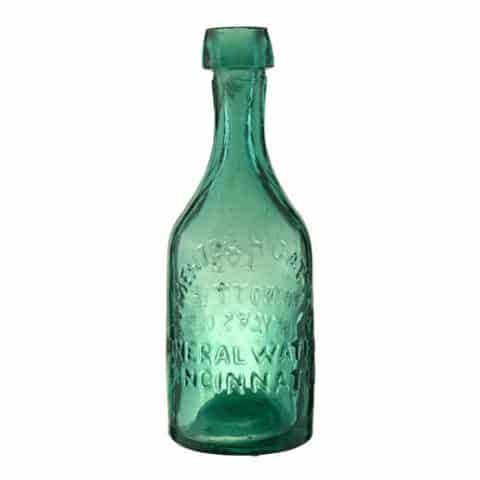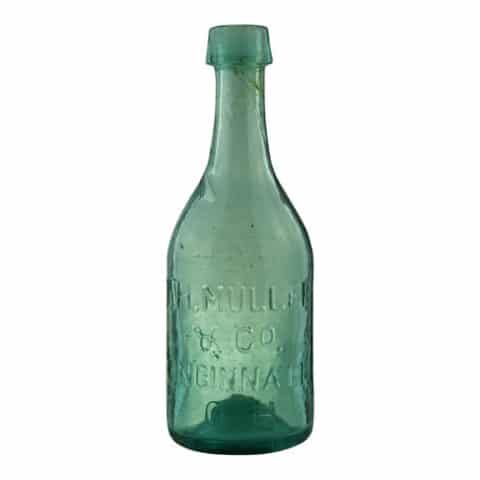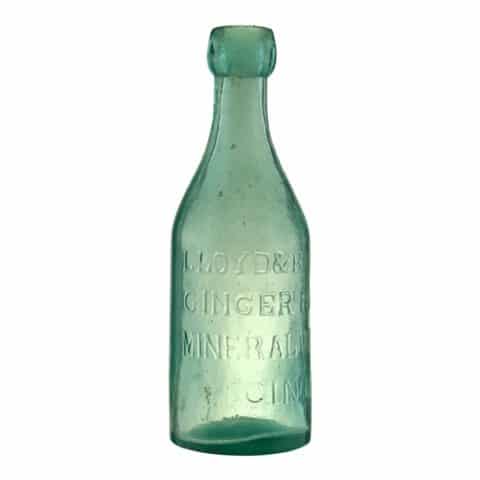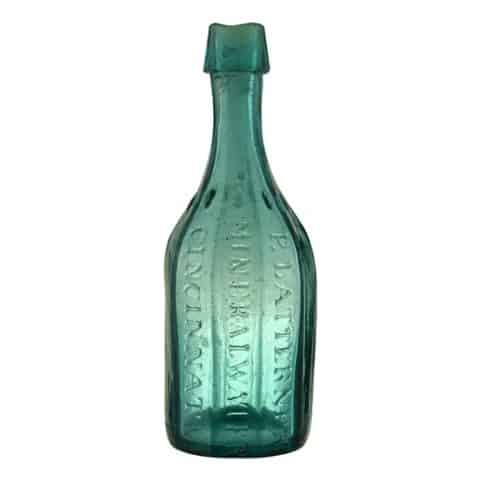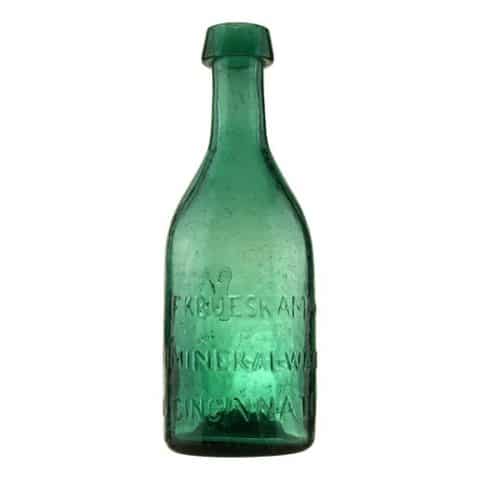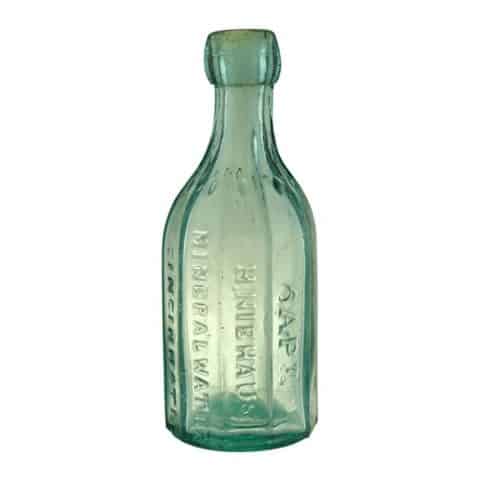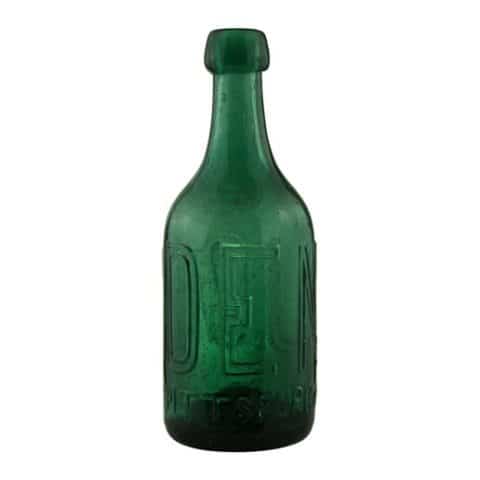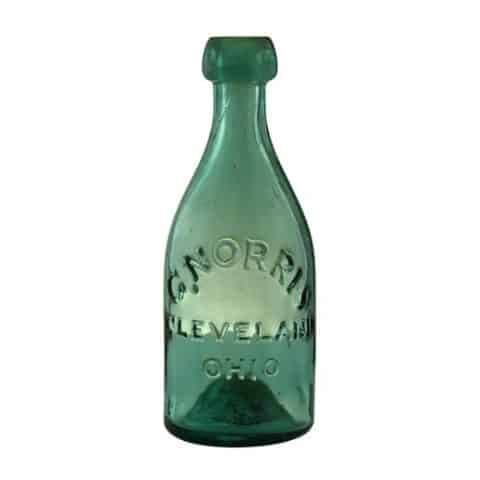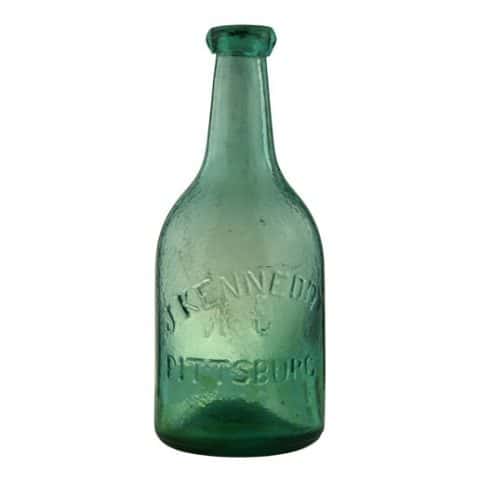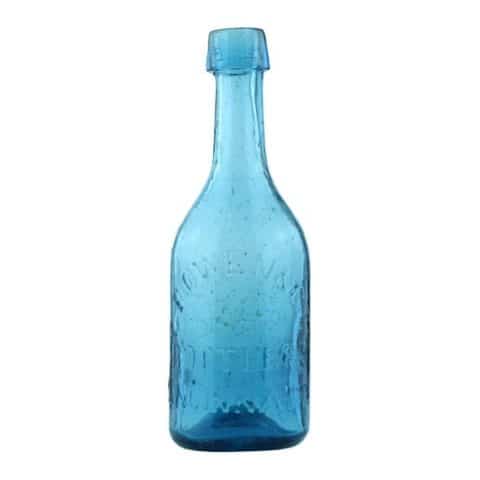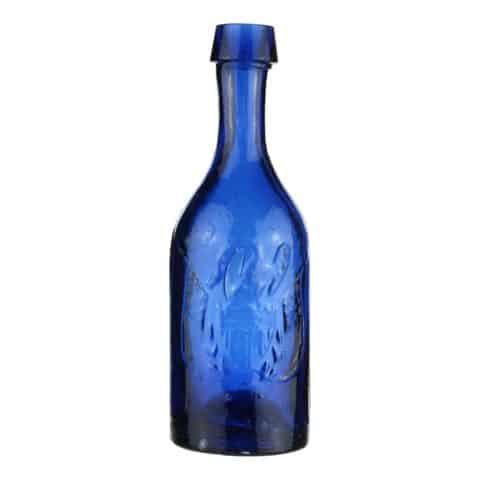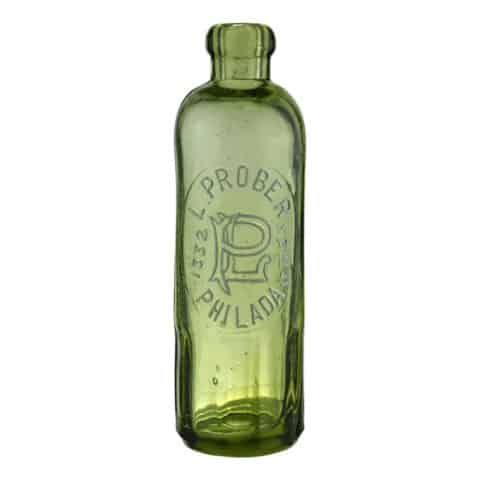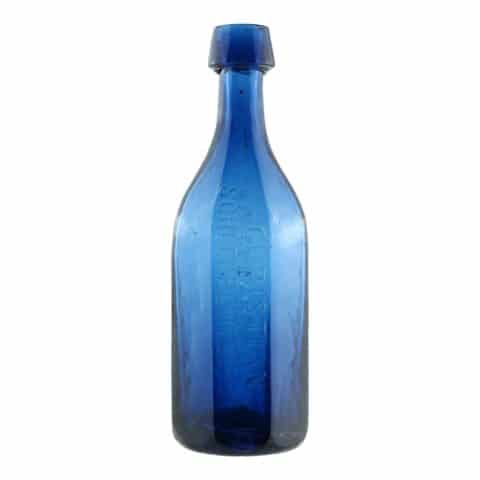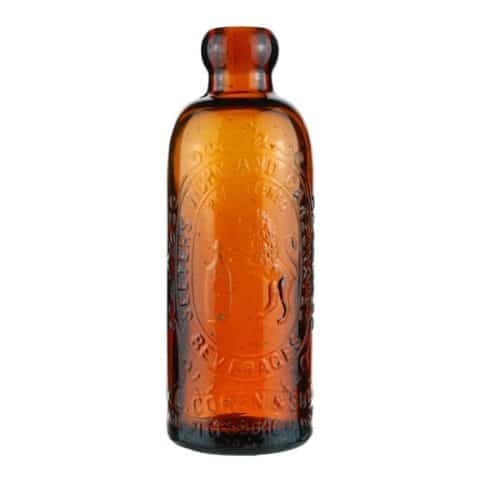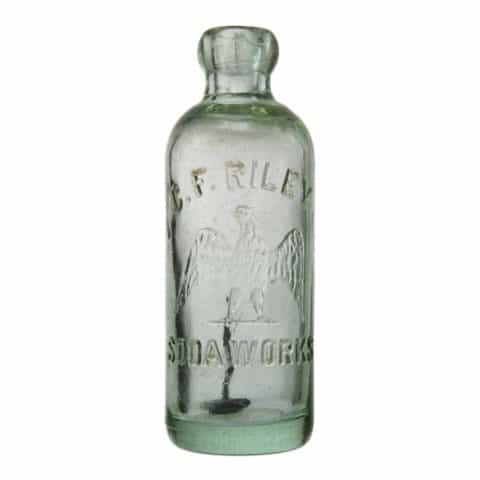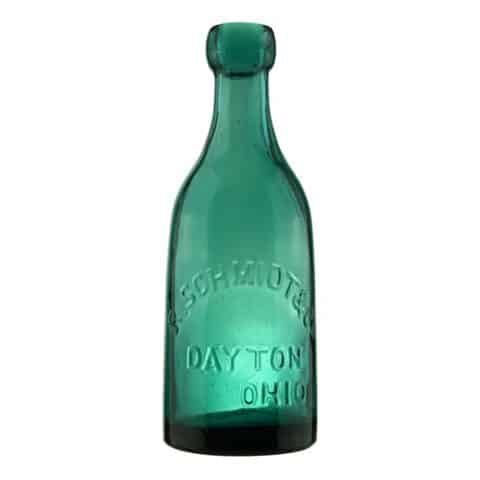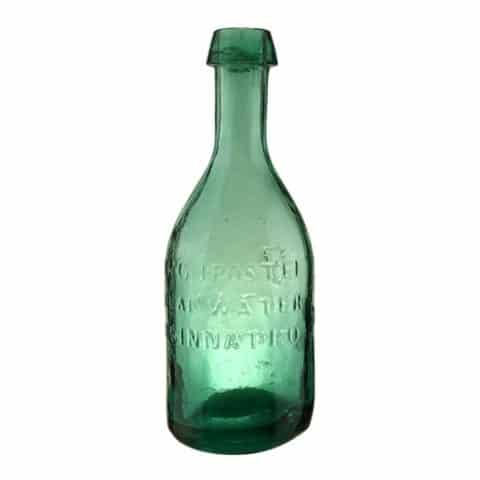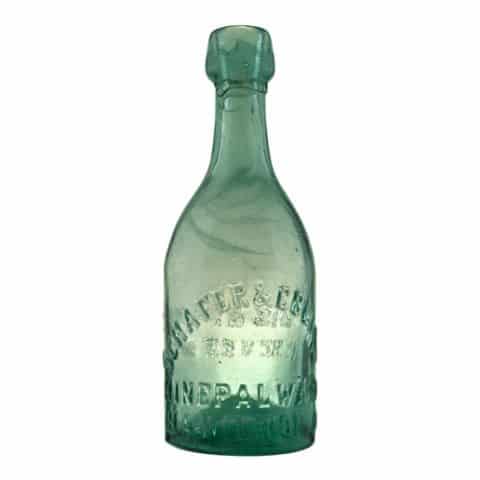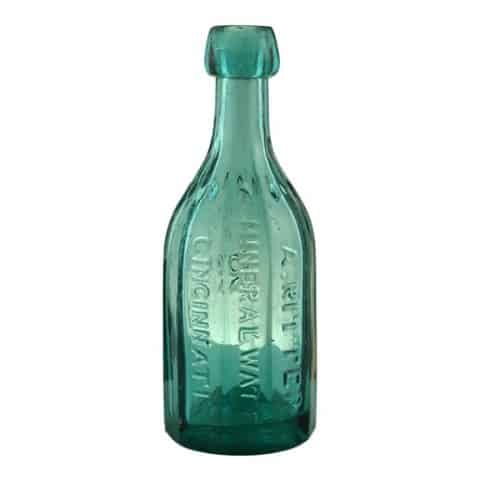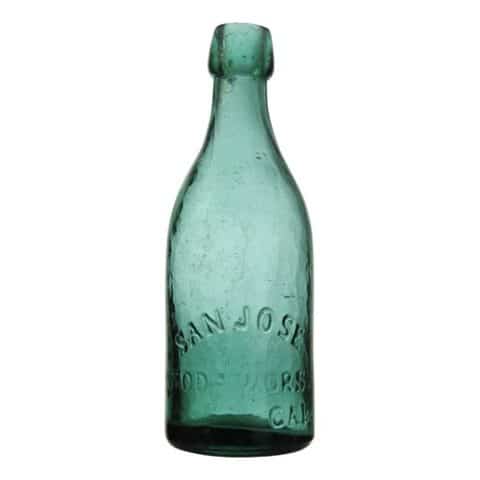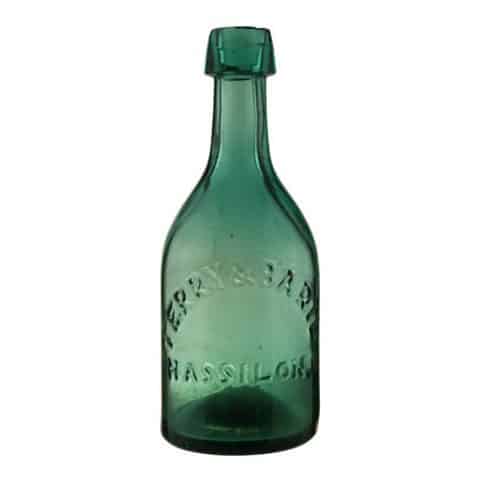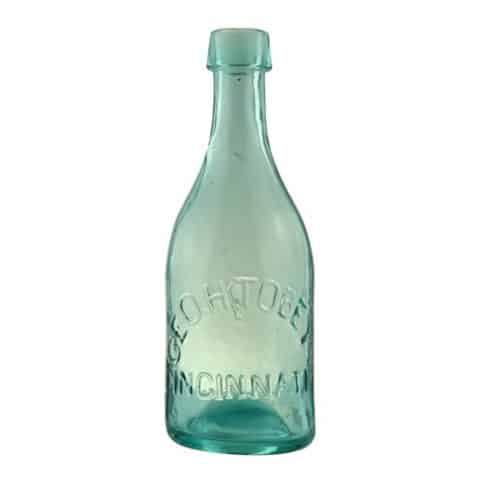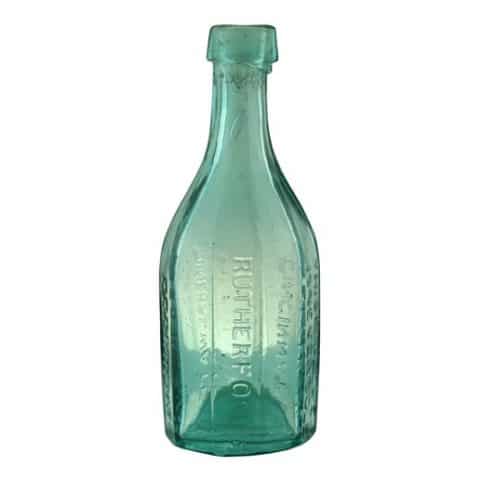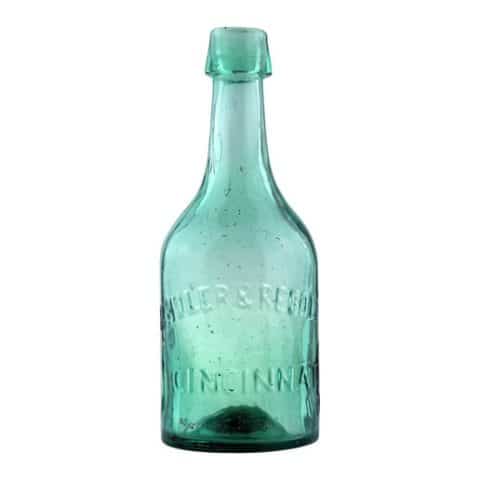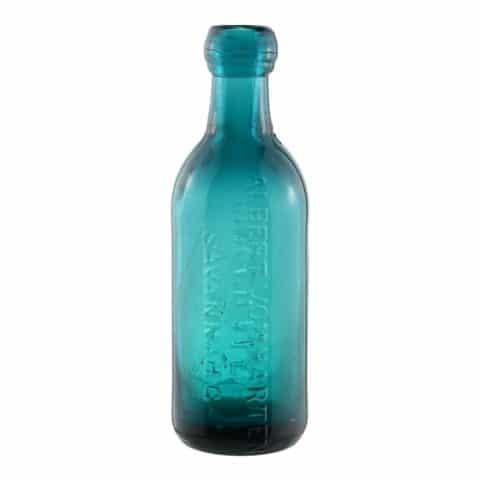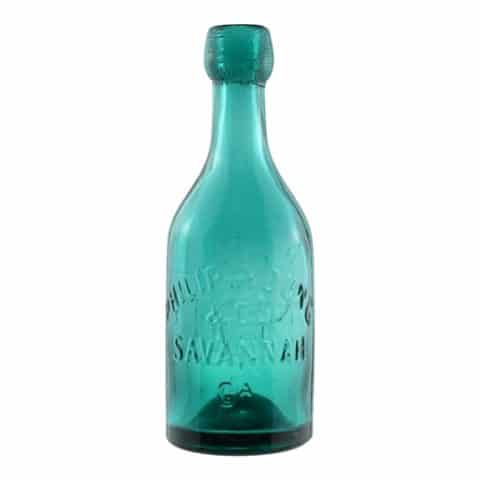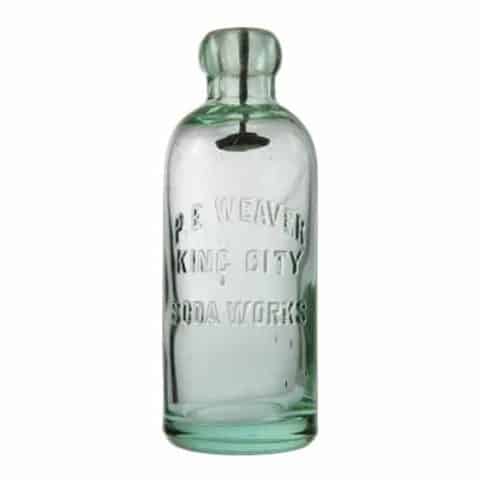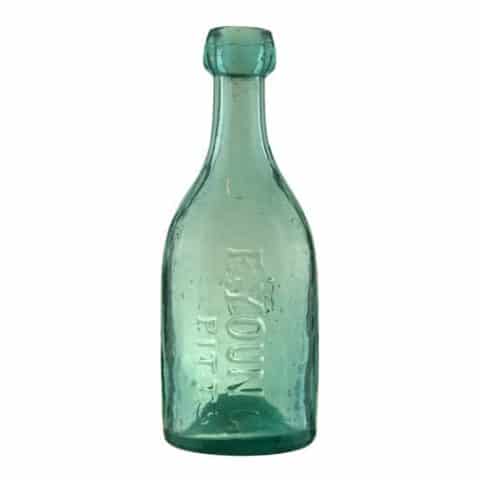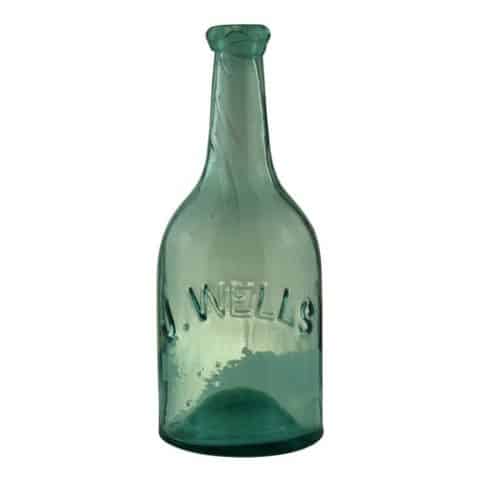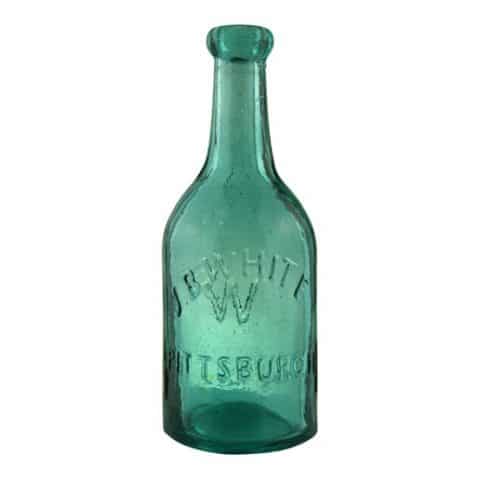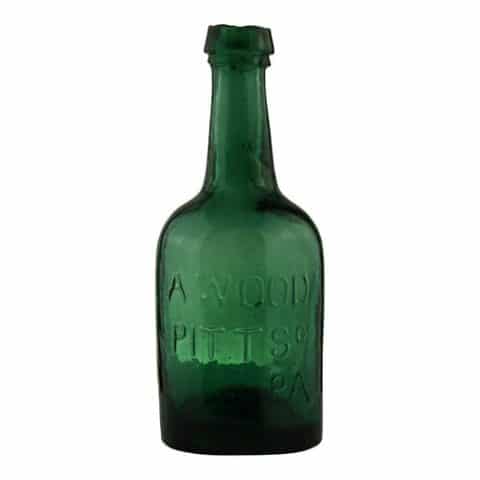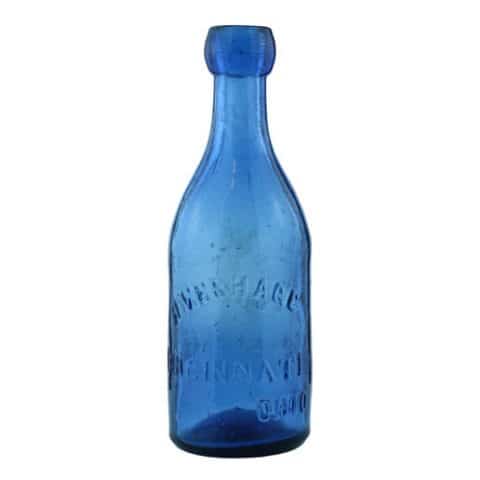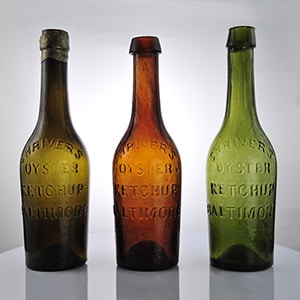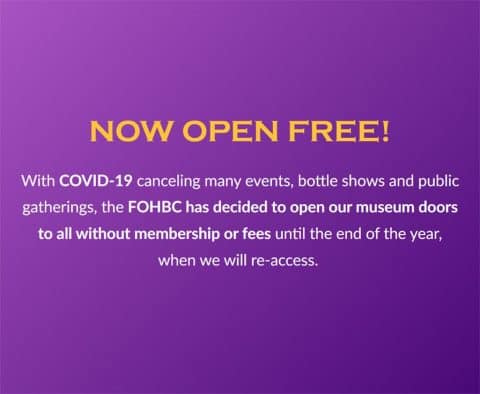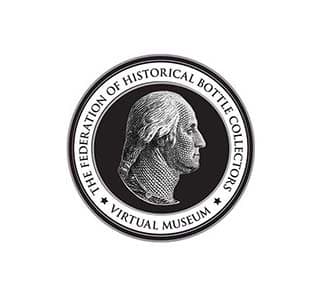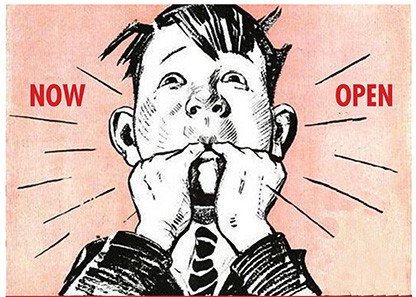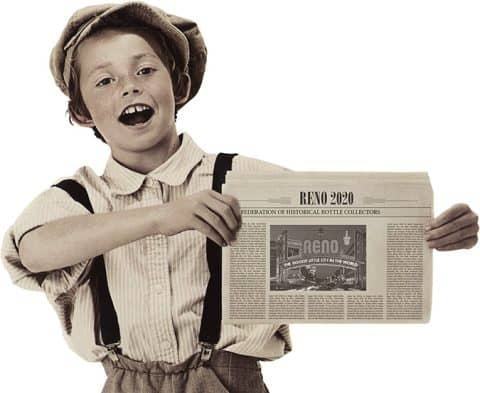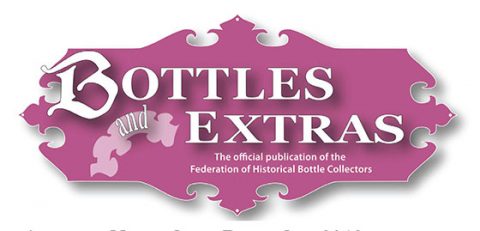Buffum & Co City Bottling House Pittsburgh. Pa. Trade Mark Registered This Bottle Must Be Returned
J. C. Buffum & Co
City Bottling House
Pittsburgh. Pa.
(Embossed Keystone and Scales Motif)
Trade Mark Registered
This Bottle Must Be Returned
JCB (Monogram)
Joseph C. Buffum, Pittsburgh, Pennsylvania
Cobalt Blue Hutchinson
Provenance: Chip Cable Collection
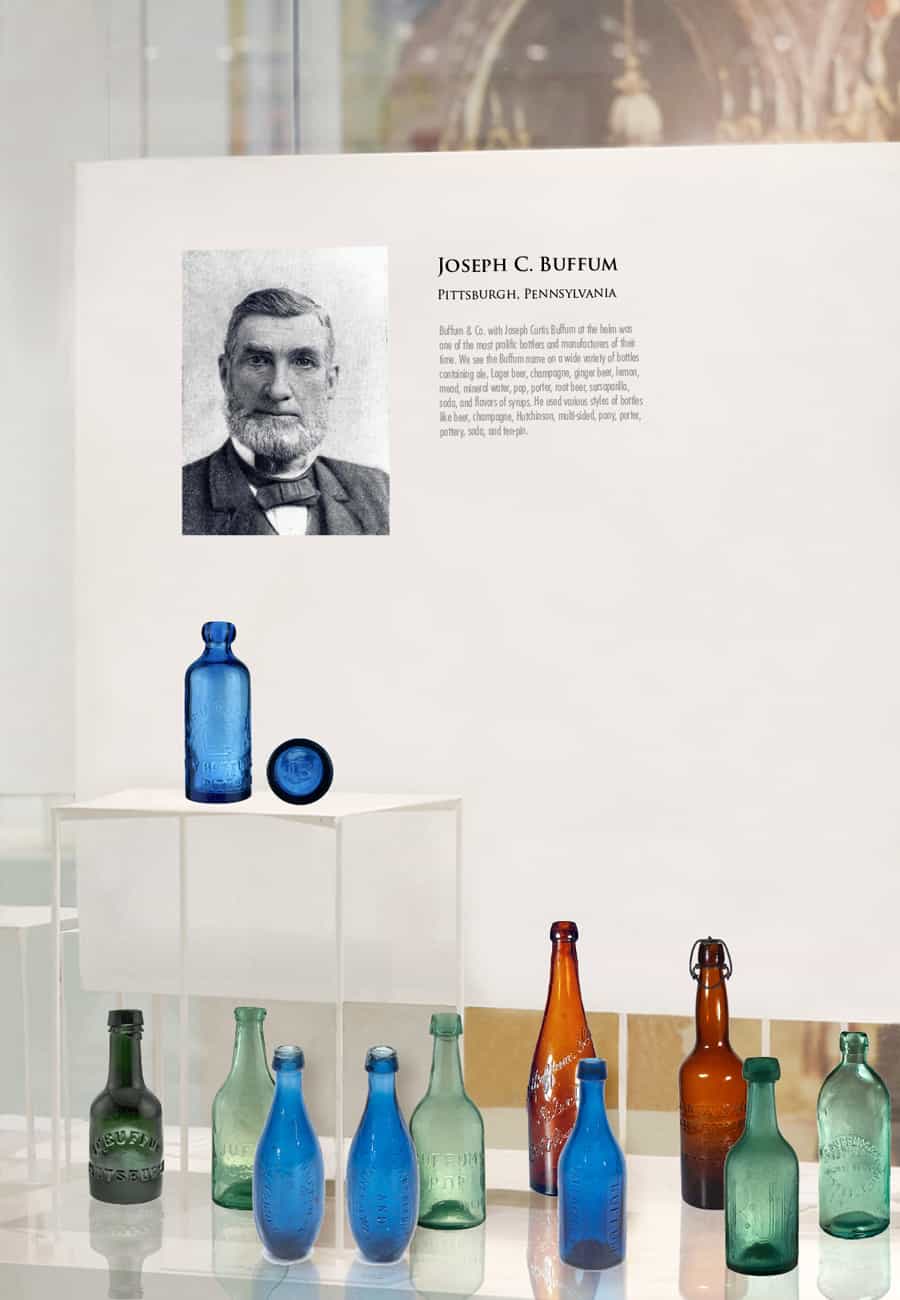
J. C. Buffum & Co., with Joseph Curtis Buffum at the helm, was one of the most prolific bottlers and manufacturers of their time. We see the Buffum name on various bottles containing ale, Lager beer, champagne, ginger beer, lemon, mead, mineral water, pop, porter, root beer, sarsaparilla, soda, and flavors of syrups. He used various styles of bottles like beer, champagne, multi-sided, pony, porter, pottery, soda, ten-pin, and Hutchinson, like our subject bottle.
Various J. C. Buffum businesses started in Pittsburgh, Pa., in 1845 and operated up to 1922, even after Buffum’s death in 1904. Buffum would travel back and forth to California many times throughout his life, adding to his colorful and adventurous life story. He was the epitome of the original 49er.
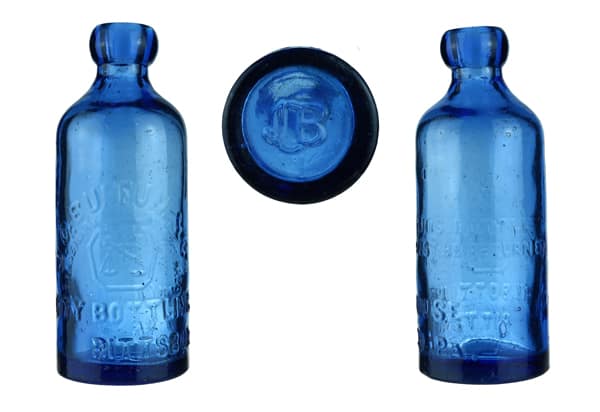
Our museum example represents a very rare 6 1/4″ tall cylindrical Hutchinson bottle embossed on two sides. The front displays a motif of the Pennsylvania keystone, with a scale and weights in the center. This bottle is heavily embossed with typography as ‘J. C. BUFFUM & CO’ occurs in an arch over the keystone emblem. ‘TRADE MARK REGISTERED,’ in smaller letters, is arched beneath. ‘CITY BOTTLING HOUSE’ is embossed in a horizontal straight line beneath the emblem. The fourth line is embossed ‘PITTSBURGH. PA.’ On the opposite side of the bottle, it reads, ‘THIS BOTTLE MUST BE RETURNED’ in two centered horizontal lines. The bottom of the bottle is embossed with a ‘J C B’ monogram. The somewhat squat bottle form has a short neck and an applied blob top collar. The glass color is medium cobalt blue. Typically the bottle is found in aquamarine glass and shades of amber.
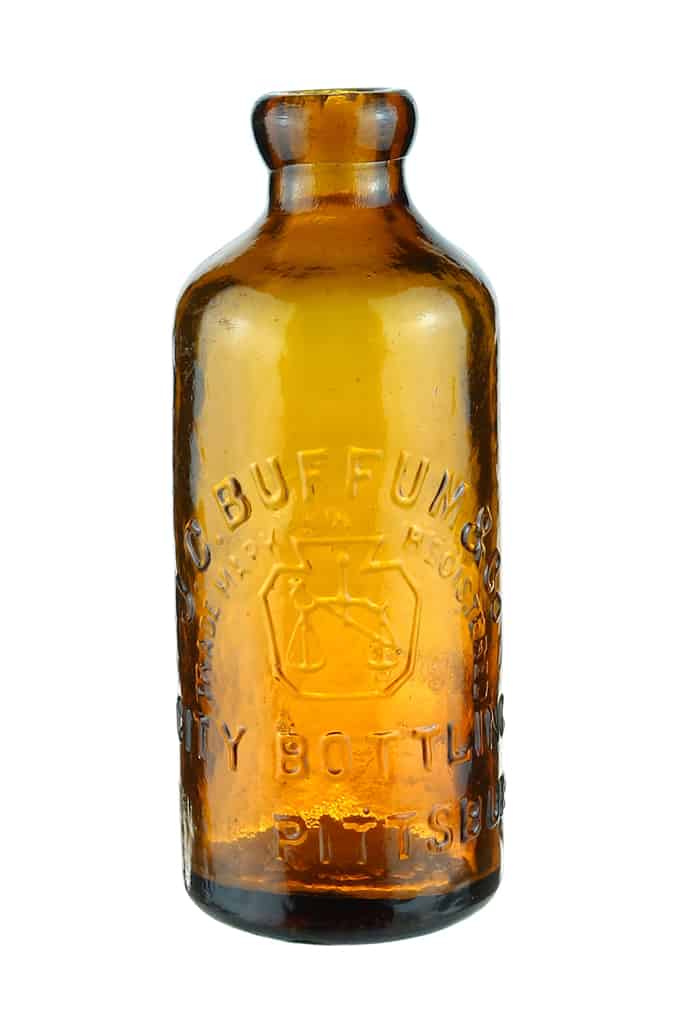
See the museum example of an amber J. C. Buffum & Co. City Bottling House Pittsburgh, Pa.” Hutchinson.
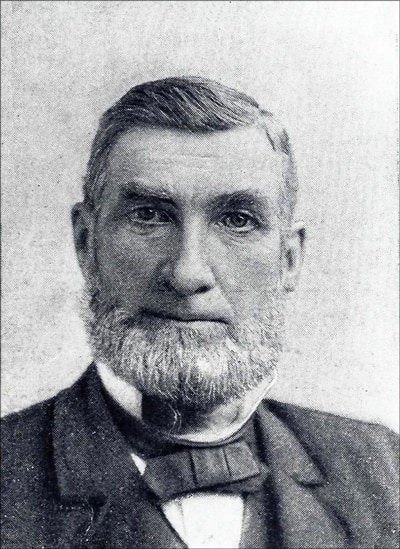
Joseph C. Buffum was born in Westmoreland, New Hampshire, on January 22, 1825. His father was Haskell Buffum (1795-1885), and his mother was Siloma Wood (Buffum) (1799-1883). His early life as a student was spent studying and observing minerals and medicine. He eventually attended Westmoreland College.
With grandiose visions of commerce, opportunity, and success, Buffum moved to Pittsburgh, Pennsylvania, around 1845 and started a mineral water business with moderate means. This 1845 date is embossed on later Hutchinson bottles (see museum support example). Buffum would marry Anna Maria Ramaley in Pittsburgh on August 3, 1848. David Ramaley, her brother, was a friend of Buffum’s and was the editor of the Pioneer Press and the St. Paul Globe. Eventually, they would have seven children; Joseph Howard, Frank Edward, Curtis Wood, Charles Ellsworth, Clara Maria, Eugene Howard, and Cora Lynn Buffum.
Hearing fabulous stories about the discovery of gold in California presented Joseph with great excitement and encouragement to make a major life-changing decision. He dreamed and contemplated for a few months while he read books on the West, consulted with friends and family, and planned a trip, eventually putting his eastern life on hold and setting off for the goldfields on February 28, 1849. The California Gold Rush began a year earlier, on January 24, 1848, when James W. Marshall found gold at Sutter’s Mill in Coloma, California. The news of gold brought approximately 300,000 people to California from the rest of the United States and abroad and propelled California to statehood on September 8, 1850, as our 31st state.
While he was gone, J. C. Buffum would maintain his bottling and manufacturing operations in Pittsburgh, located at No. 90 First Street, No. 18 Market Street, and 100 Liberty Street. It is assumed that he had several business partnerships with family members and others. In 1850, he advertised Buffum & Co. as a “Bottler and Manufacturer of Porter, Ale, Cider, Sarsaparilla, Mineral Waters, and Pop.” At that time, orders had increased significantly for his products, and Buffum & Co. was shipping to all parts of the United States. Looking at the 1850 Fahnestock’s Pittsburgh Directory, we see that his mother had a dress shop not far away. Just about a block away, John Ogden was selling mineral water too.
See our museum example of a Buffum & Co. Pittsburgh.
See our museum example of a Buffums Pop Pittsburgh.
See our museum example of a Buffums Porter.
Buffum and his group of gold-seeking pioneers would depart from New Hampshire. Joseph documented his trip West dealing intermittingly with terrible weather, disease, discord, rugged conditions, Indians, crime, the Rockies, and every possible travel hazard one might imagine. Being a lover of nature, he always persevered as the new world unfolded in front of him in all its beauty.
Buffum and what was left of his party arrived at Sutter’s Fort on August 21, 1849, which had been converted into a hotel. Next, he passed down to Sacramento Village or City and noted that “considerable shipping lies in the river and the town is improving rapidly but built chiefly of canvas.
“Having a few dollars left, I dined at the American House, kept by Orlando McKnight. Had a tolerable dinner at $1.25 and returned to camp. Wrote a letter home. Spent the last of my money. Whole expense in coming to California from Hanover, N.H. (including one extra fare of wife to Pittsburgh, Pa., $34), $328.50.” With some success in the hills and goldfields, Buffum would head next to San Francisco.
In December of 1849, Buffum purchased two parcels in San Francisco for $545. He was astute enough to see that property values were all over the place but generally skyrocketing. In January 1850, he rented a room on Spofford Street with Capt. Charles Howard, a policeman. He noted, “As there was no chance to get into business, I remained here reading Horace and Blackstone, writing studying Spanish, etc. till January 24 and paying $16 a week for board.” On January 24, 1850, Buffum states, “When a Mr. John Cammet and myself rented another room in the same house of Senor Santiago Fabarah, a senator in the Peruvian Congress. Rent $60 per month. We purchased a little stove for 20 dollars and boarded ourselves having fitted up some berths to sleep in. Here we commenced bottling and trade on a small scale.”
Buffum made no more mention of his bottling business until April 1, 1850, when he notes, “Still continued, bottling business increasing. Purchased a mule and wagon for $272 & 1/2, we now rent 3 rooms for 70 per month.” By April 26, 1850, Buffum notes, “Very hot. Thermometer 102 in the sun. No wind. Bottled 82 dozen, good time for beer. Bottled 1,000 bottles”. Then, on August 1, 1851, he states, “Mr. Cammet and myself have just disposed of out house and lot on Spofford Street, together with our business and all our fixtures for making and selling beer to Mr. Wm. H. Burt for the sum of three thousand dollars, one thousand and two hundred of which he paid this day in cash and gave us the following notes for the balance at two per cent interest per month.” The remaining was to be paid off in several notes at different times. He then notes, “We have also bound ourselves by a penalty of ($3,000) three thousand dollars that we will not jointly or separately manufacture or sell or in anyway aid or encourage the manufacturing or selling of Sarsaparilla or Ginger Beer for the term of five years from date in opposition to Wm. H. Burt in the limits of the city of San Francisco without a written consent from him.” J. C. Buffum and W. H. Burt were first cousins. Their mothers, Seloma Wood Buffum and Martha Wood Burt, were sisters.
Within a few days after the sale of the bottling business of Buffum and Cammet, Buffum prepared to settle up his business activities in California and return home. He concluded to remain until after September 1 to learn more of the Nicaraguan route, which was something of interest to returning gold seekers. Regardless of his impending return, Buffum couldn’t pass up a good real estate deal and was still purchasing property in San Francisco as late as August 29, 1851.
Buffum would head back to Pittsburgh in September 1851, only to return to San Francisco in 1856 with his wife.
J. C. Buffum’s Pittsburgh business was growing as the 1860 United States Federal Census affirmed that his primary profession was that of a mineral water manufacturer. As a testament to his success, he noted that his real estate value was $15,000, and his estate value was $5,000. His address at the beginning of the Civil War was 26 Market Street.
The early to mid-1860s and the Civil War must not have had too much negative effect on the business as Buffum & Co. expanded with great success. The drinks that Buffum bottled and sold would be a staple for the troops and the families of growing America. At this time, his bottled or kegged beverages were advertised as medicinal whether they contained alcohol or not. By 1870, Buffum’s net worth had increased as his estate value was listed as $20,000 and his real estate value as $46,000 in the 1870 census.
Within Industries of Pittsburgh: trade, commerce and manufactures: historical and descriptive review In 1879, a profile of the business stated:
J. C. BUFFUM & CO. – Manufacturers and Bottlers, 39 & 41 Market St. – For more than thirty years the name of Mr. Buffum has been identified in this city with the manufacture of Soda Water, Syrups, Root Beer and Ginger Ale, and with the bottling business which has become one of considerable magnitude and importance. Starting in 1845 with moderate means the business of this house has steadily increased until at the present time thirty-five to forty hands are employed with a weekly payroll aggregating more than $300, and nine wagons are engaged in delivering goods to customers in the two cities and to the various railroad depots, to supply their country customers. An average stock of not less than $30,000 to $40,000 is carried by this firm, and their annual sales will reach $50,000. Messrs. Buffum & Co. manufacture a superior article of Soda Water and choice fruit syrups of every flavor, Weiss Beer, Ginger Ale and Root Beer, and bottle immense quantities of Ale, Cider, Lager Beer, Porter, &.C., making a specialty of the best grades of Cincinnati and Milwaukee Lager Beer for table and family use. They import direct large invoices of the standard articles of English and Scotch Ales, Brown Stout, and London Porter in the wood and bottle for the trade, hotels, and families. Their Weiss Beer has attained a very high reputation and is highly recommended for its superior quality and general excellence. They have one engine and all the necessary machinery requisite in their extensive establishment, which is located in the spacious double three-story warehouse 40 x 100 feet with cellars, at Nos. 39 to 41 Market street. This is one of the oldest, most extensive and best-known establishments of the kind in the West, and the high estimation in which the house is held has been secured by the energy, enterprise, and reliability of the firm and the superior quality of all goods manufactured and sold by them.
The last time J. C. Buffum returned to California, he settled down with his wife and resided in Fair Oaks, California. On March 5, 1904, Buffum died. He was survived by his wife and two sons, Joseph H. and Dr. Eugene H. Buffum.
Primary Image: J. C. Buffum & Co. City Bottling House Pittsburgh, Pa. Hutchinson (cobalt blue and amber), Buffum & Co. Pittsburgh, Buffum’s Pop Pittsburgh, and Buffum’s Porter bottles imaged by the FOHBC Virtual Museum midwest studio led by Alan DeMaison.
Support: Reference to The American Pontiled Soda Database Project, Tod von Mechow.
Support: Reference to Soda & Beer Bottles of North America, Tod von Mechow.
Support: Reference to The Romance of Sacramento By Christina Krysto, 1923, Personal Record of a Pioneer Joseph C. Buffum as Miner and Business Man in California
Support: Reference to Industries of Pittsburgh: trade, commerce and manufactures: a historical and descriptive review In 1879
Support: Reference to Buffum bottling in San Francisco from Eric McGuire.
Support Images: Virtual Museum examples of Buffums Pop Pittsburgh and Buffums Porter from the Doug Shutler collection.
Join the FOHBC: The Virtual Museum is a project of the Federation of Historical Bottle Collectors (FOHBC). To become a member.
Join the FOHBC: The Virtual Museum is a project of the Federation of Historical Bottle Collectors (FOHBC). To become a member.

